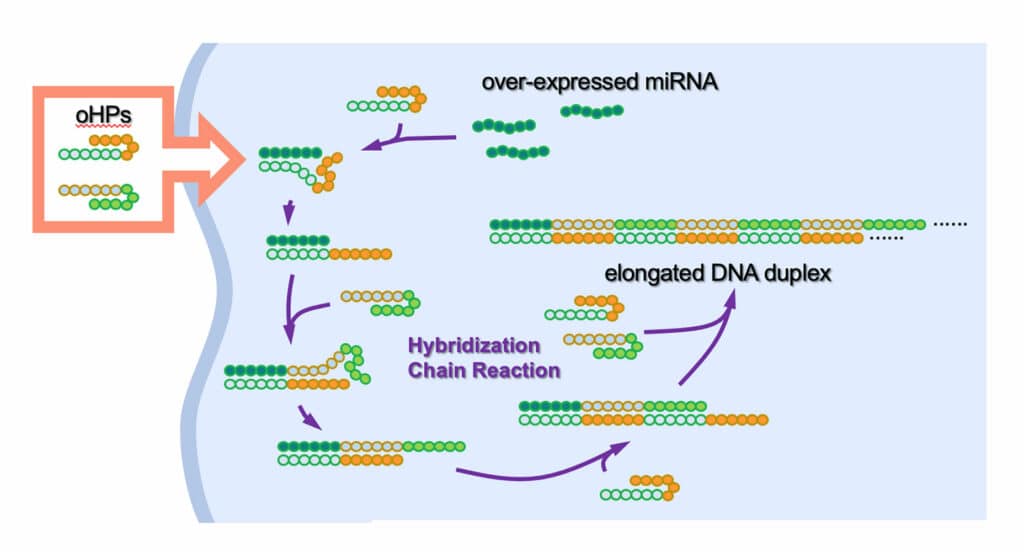Artificial nucleic acids have attracted much attention as potential cancer immunotherapeutic materials because they are recognized by various extracellular and intracellular nucleic acid sensors and can stimulate innate immune responses. However, their low selectivity for cancer cells causes severe systemic immunotoxicity, making it difficult to use artificial nucleic acid molecules for immune cancer therapy.
To address this challenge, scientists at the University of Tokyo have created a pair of chemically synthesized, hairpin-shaped, cancer-killing DNA. They used artificial DNA to target and kill cancer cells in a completely new way.
The DNA pairs are linked to microRNA (miRNA) molecules that are overproduced in some tumors when they were injected into cancer cells. They unwound and combined after they were bound to the miRNA to produce longer DNA chains, which stimulated an immunological response. In addition to eliminating the cancer cells, this reaction also stopped the spread of malignant tissue. It is envisaged that this approach, which differs from traditional anticancer drug therapies, would usher in a new era of drug discovery.

Professor Akimitsu Okamoto from the Graduate School of Engineering said, “We thought that if we can create new drugs that work by a different mechanism of action from conventional drugs, they may be effective against cancers that have been untreatable up to now.”
Cancer cells can overexpress or make too many copies of specific DNA or RNA molecules, causing them not to function normally. The team created artificial oncolytic (cancer-killing) hairpin DNA pairs called oHPs. These oHPs were triggered to form longer DNA strands when they encountered a short (micro) RNA called miR-21, which is overexpressed in some cancers.
OHPs typically don’t form longer strands because of the curvature of their hairpin shape. However, the synthetic oHPs open up to join the target microRNA and produce a longer strand when they enter a cell and come into contact with it. Due to the immune system now being aware of the overexpressed miR-21, the cancer cells eventually perish due to the immune system’s activation of innate immunological response.
The tests were effective against overexpressed miR-21 in human cervical cancer-derived cells, human triple-negative breast cancer-derived cells, and mouse malignant melanoma-derived cells.
Okamoto said, “The formation of long DNA strands due to the interaction between short DNA oHPs and overexpressed miR-21, found by this research group, is the first example of its use as a selective immune amplification response which can target tumor regression, providing a new class of nucleic acid drug candidates with a mechanism that is completely different from known nucleic acid drugs.”
“The results of this study are good news for doctors, drug discovery researchers, and cancer patients, as we believe it will give them new options for drug development and medication policies. Next, we will aim for drug discovery based on the results of this research and examine in detail the drug efficacy, toxicity, and potential administration methods.”
Journal Reference:
- Kunihiko Morihiro, Hiraki Osumi, Shunto Morita, Takara Hattori, Manami Baba, Naoki Harada, Riuko Ohashi, Akimitsu Okamoto, “Oncolytic Hairpin DNA Pair: Selective Cytotoxic Inducer through MicroRNA-Triggered DNA Self-Assembly,” J. Am. Chem. Soc. 2022. : December 21, 2022, doi: 10.1021/jacs.2c08974.





